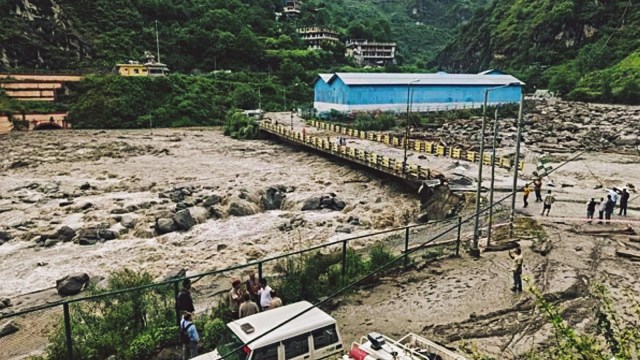Ananthakrishnan G. is a Senior Assistant Editor with The Indian Express. He has been in the field for over 23 years, kicking off his journalism career as a freelancer in the late nineties with bylines in The Hindu. A graduate in law, he practised in the District judiciary in Kerala for about two years before switching to journalism. His first permanent assignment was with The Press Trust of India in Delhi where he was assigned to cover the lower courts and various commissions of inquiry. He reported from the Delhi High Court and the Supreme Court of India during his first stint with The Indian Express in 2005-2006. Currently, in his second stint with The Indian Express, he reports from the Supreme Court and writes on topics related to law and the administration of justice. Legal reporting is his forte though he has extensive experience in political and community reporting too, having spent a decade as Kerala state correspondent, The Times of India and The Telegraph. He is a stickler for facts and has several impactful stories to his credit. ... Read More
Logs floating in flood water from uprooted trees, no illegal felling: Himachal govt to SC
The state government said it had initiated suo motu inquiry even before the top court took cognisance.
 The floodwaters mobilised this debris, which became trapped in culverts and damaged structures, thereby resulting in the large volume of wood visible in water channels. (Source: File)
The floodwaters mobilised this debris, which became trapped in culverts and damaged structures, thereby resulting in the large volume of wood visible in water channels. (Source: File)The timber logs found floating in flood water, seen in a recent viral video, were from trees uprooted after cloudbursts and not from alleged tree felling uphill in the catchment areas of the Ravi and Beas rivers, the Himachal Pradesh government has told the Supreme Court which had taken cognisance of the matter.
In an affidavit on October 6, the government said forest officials had even counted the number of logs at 177 in Chamba region, one of the two affected areas. “The presence of large quantities of logs in rivers after cloudbursts is a globally observed, scientifically explained natural process arising from slope failures, erosion, and remobilisation of old wood deposits,” it said.
On September 4, while taking note of the video, a two-judge bench, presided by CJI B R Gavai had said it “prima facie” appears to be a case of “illegal felling of the trees…going on up the hills” and sought responses from the state and the Centre.
The SC was hearing a PIL filed by Panchkula resident Anamika Rana through Advocate Akash Vashishtha after massive flooding in the Himalayan states and the consequent ecological damage.
It had sought “formation of Action Plan(s), SIT enquiry and geological, geo-technical and ecological investigation to prevent future disasters and also to protect the pristine, fragile Ecology of the Himalayan States…”
The state government said the forest department “formed two committees under the chairmanship of respective Conservator of Forest for Chamba and Kullu Forest Circle to assess the wooden logs…”
The government pointed out that “multiple field inspections and Committees reports categorically record no evidence of illegal felling or organized timber extraction. The wood found in rivers and reservoirs consists predominantly of uprooted trees, driftwood, rotten logs, lops, tops, and biomass debris of low or no commercial value. This position is further supported by the testimony of local communities, panchayat representatives, photographic and videographic evidence. Both the inquiries indicate there has not been any large scale or organised illegal felling as alleged in the area.”
It said that incidents like heavy rainfall, cloudbursts and glacial movements lead to extensive flooding and runoff in the Chambal region whose “steep geological strata…are highly susceptible to landslides and slips” and “result in large-scale uprooting of trees which are carried downstream…”
It said that “driftwood carried by the natural flow of the river accumulates throughout the year in the reservoirs of hydroelectric projects, including Chamera-III Dam (Hibra, Bharmour), Chamera-I Dam (Bagga), and Chamera-l Dam (Taleru)… During flooding, the opening of dam gates for discharge of excess water results in the release of such accumulated driftwood downstream” and this “substantially increases the driftwood load in the river, aggravating the environmental and structural risks in the downstream areas.”
The state said that after the flood water receded, forest department field staff inspected the affected area and recovered the driftwood from the site, adding that “no sawn timber/sleepers/scants or finished timber was found on the spot”. “Most of the logs found have signs of natural breakage and irregular shapes, caused by rocks and river currents…Many of the logs on the spot were found with roots/stumps, which indicate they have been uprooted during the natural calamity,” it said.
It added, “…it can be concluded there is no explicit evidence of any large scale or organised illicit/illegal felling as reported in various social media reports.”
As regards the Kullu region, the state again cited natural causes and said the massive soil erosion and frequent landslides along the riverbanks and adjoining hillsides due to flash floods cause uprooting of trees and shrubs, which are consequently washed into the Beas River.
It said, “the cloudburst caused extensive forest damage, dislodging waste wood that had long remained on forest land. The floodwaters mobilised this debris, which became trapped in culverts and damaged structures, thereby resulting in the large volume of wood visible in water channels.”
The state government said it had initiated suo motu inquiry even before the top court took cognisance.





- 01
- 02
- 03
- 04
- 05



























